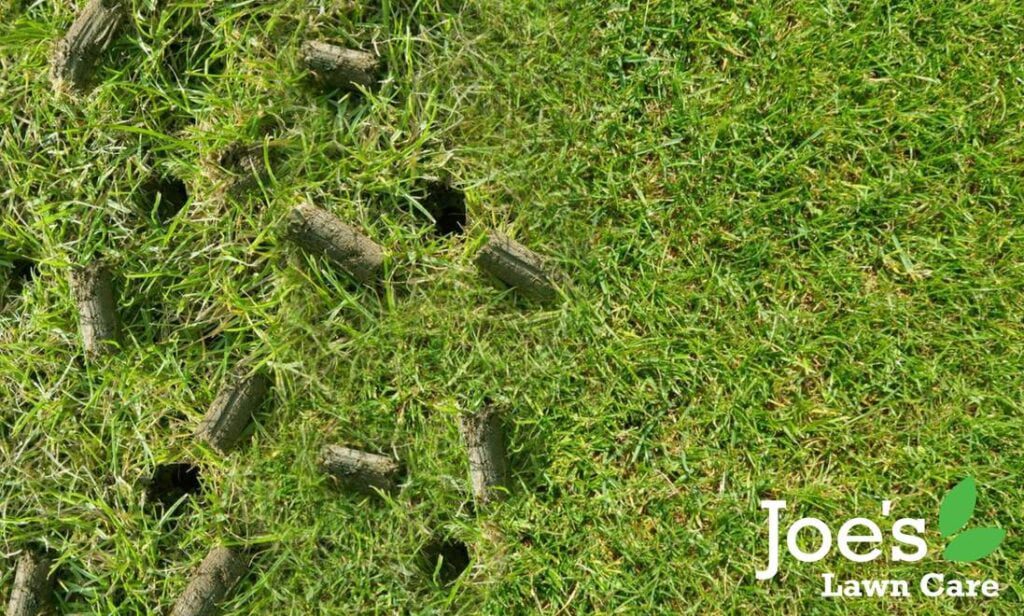An Overly Simplified Five-Step Plan To Lawn Care:
Some things are life are super-simple. Counting to ten on your fingers. Toasting a Pop Tart in the toaster. Reading the Hungry Caterpillar. Not liking Donald Trump. Getting drunk. Wasting hours of your day on Instagram. And hating Mondays. They’re all as easy to do as breathing in through your nose and out through your mouth (*you just tried it, didn’t you). Unfortunately, though, as that Newton Isaac bloke realised, “for every action in life, there is an equal and opposite reaction,” and that means there are also some things in life that aren’t exactly super-simple, such as lawn care.
That’s because no two lawns are the same. There are just too many variables that can have an influence. Think of it like trying to get to work on time in the morning. There’s relying on your alarm, not knowing how many times you will hit the snooze button, deciding what to have for breakfast, finding out your first choice brekky-option isn’t possible and having to rethink, trying to find your clothes on the chair in your bedroom, getting caught in conversation with your neighbour as you leave the house, traffic, and so much more.
To translate this into lawn care language, there are different soil conditions, micro-climates, weather conditions and geographical locations to think about. There’s your garden’s orientation to the sun, the amount of shade covering your garden, how many shrubs you have, how much you use your lawn, pets and children, your lawn’s previous history – all of these can drastically alter a lawn care program, which is why no one lawn should ever be treated exactly the same as another.
The problem is: people love things to be easy (it’s why the microwave became so popular and Netflix took off), so I’m going to try and smush it down into a six-step program that makes lawn care easy. Enjoy.
1. The Wonder Of Watering

A lawn that doesn’t get enough water will start to go brown, sort of like an old avocado left on the windowsill. It won’t die (unless there is an apocalypse and the world is covered in a cosmic-space-ash for the next hundred years), but it will go into a sort of coma, which isn’t ideal. Luckily, grass is great at making a full-recovery so long as you mimic rain when you water your lawn. The trick is knowing how much water is needed.
To help you with this, In spring and autumn, the watering-your-lawn rule of thumb has always been about an inch of water a week, which is pretty much covered by rainfall. However, when the summer comes around (or at least those six-and-a-half days in July when we can take our knitwear off), you’ll want to increase this by about 50%, which means supplementing the lack of rain with your garden hose.
That’s the point I really want to make. When watering, you want to supplement any lack of rain, not be the main source.
Anyway, the reason it’s so important to get your watering habits on point is to help build the strongest and deepest roots you possibly can so that, if we have another crazy summer of 100 degree heat, your grass will be able to stand up and fight against drought without you turning on the hose (unless it is absolutely necessary).
2. The Fine Art Of Fertilising

When it comes to fertilising your lawn, nothing is more important than the timing. In the same way you probably want to wake up a little before you try to make yourself a cup of hot coffee, you want to give your lawn the chance to wake up on its own before you get out there and start throwing fertiliser around like confetti at a spring wedding. The same goes for autumn fertilising too. You want to let your lawn harden off on its before helping it out. If you don’t obey these time-bound-guidelines, you’ll find your lawn succumbs to excessive top growth when it should be the roots that are developing.
Of course, it’s not just about when you spread the love, it’s also about the sort of love you are spreading. Ideally, you want to spread a fertiliser that’s high in nitrogen at the start of spring (this will encourage growth at the perfect time) and a fertiliser that’s a little more potassium-heavy in the autumn (because that’s when you want to focus on your lawn’s root system a little more).
3. Those Pesky Pests & Weeds

We know this isn’t what any garden-owner wants to hear but weeds and pests and everything in between are a common pain in the backside around the globe. That’s the bad news. The dollop of good news is: weeds and pests are only really a problem when your lawn is more stressed out than a parent with three sets of twins, by which we mean not well kept, under-nourished and far from properly maintained.
To put it bluntly: weeds and pests are sneaky little opportunists. They’ll happily kickback, relax and bide their time, and then the second they see your lawn turning a little bare or thinning out or succumbing to poor soil conditions – wham! – they’ll invade like some hard-to-pronounce House from Game of Thrones. The Lannisters – someone like that. Essentially, this means if you’ve noticed a few weeds cropping up and pests hanging about, there’s more than likely an underlying problem with your lawn. If that’s the case, have your soil tested to ensure it’s at the correct pH level and it’s getting all the nutrients it needs. That’s the first step, and one that will help you improve the condition of your soil while simultaneously quashing almost all of your weed and pest problems too.
4. Mow Money, Mow Problems

If I have said it once, I have said it 6.48 million times. Mowing your lawn too short is a surefire way to invite disease into your backyard. And no one with even the slightest green thumb wants to stare out of their kitchen window – with sud covered hands – at a lawn riddled with disease. But that’s what will happen.
I know why you might do it: because a short, manicured lawn looks pretty. But scalping your turf will see weeds crash your party. Not only that, but your lawn’s root system won’t grow deep into the soil. That’s the dream right there – deep roots. As such, it’s a much better idea for you to get on your knees, pull the lever that raises the deck and mow high. No less than 2½ inches. Trust me: your grass’ favourite haircut is a long back and sides.
5. Scarification & Aeration

Science wasn’t my strong point at school. But I did manage to pick up one thing that stuck with me like a barnacle on a humpback whale. The roots of your grass need both air and nutrients in order to breath, grow and become more awesome than He-Man. Which is exactly what aeration and scarification will offer your lawn. They will offer it the chance to be more awesome than He-Man. They will ensure your lawn’s root system gets all the fresh air, water and nutrients it needs to become lush, long and green. And a root system you can be proud of. Period.
For as long as I can remember, I have wanted to be the Donald Trump of lawn care. Whoa. What I mean is, I sort of wanted to be the Trump of lawn care. No. I don’t want to rock a dodgy toupe. Treat women like second-class citizens. Uphold racist views. Split families apart at the border. Have tiny hands. Speak with a weird twang. Have no one turn up at my inauguration. Leave the Queen waiting for 15 minutes. Play golf seven days a week or become a caricature of myself. But I do want to Make Lawns Great Again, and this is the five-step plan to doing so.
Thanks for reading An Overly Simplified Five-Step Plan To Lawn Care! For more lawn care tips and tricks, please do follow us on Facebook and Instagram.






